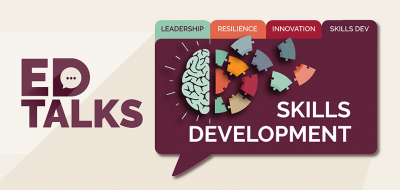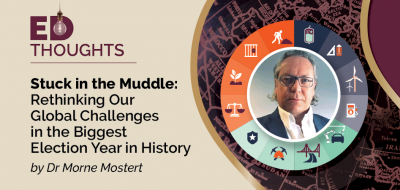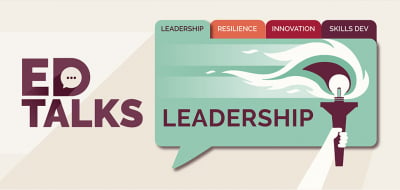Doing business in a world where “the ability to do has outstripped the ability to understand”, has according to Gro Brundtland and fellow recipients of the prestigious Blue Planet Prize, in recognition of their contribution to solving global environmental problems, “resulted in a perfect storm of problems.” This came as no surprise to business leaders attending the USB-ED Knowledge Sharing Session in Mauritius, hosted in partnership with Global Natives, who recognised that they faced a level of complexity and uncertainty which is challenging to keep pace with.
In times like these businesses can, as complexity leadership researcher Marion Uhl-Bien puts it, no longer rely on “the limited intelligence of a few brains on top.” Coaching has massive potential to mobilise networks of leaders distributed across the organisation, yet to do this we need to rethink the usual approach to the design of coaching interventions.
We need to find ways to work with these complex problems which tend to be messy, having many cause and effect relationships acting on them, meaning that there is often not one root cause. These so-called wicked problems are also challenging as they typically extend beyond the expertise of any single expert. Despite this, leaders revert back to the more familiar analytic skills that are unfortunately only suited solving technical or complicated problems, in which they try to find and address the faulty part. All too often companies look for who’s to blame when in reality there’s a systemic pattern in place.
Over my years of practice as an executive coach I’ve often been called in to coach the employee or team that needs development, and when I scratch a little beneath the surface, I find that there’s a much broader need, often between individuals, teams, or business units. Adopting a complexity approach requires that we bring stakeholders together and map the dynamics of the system prior to designing the coaching approach. We need to focus a lot more on coaching stakeholder groups and not just leaders and teams. As is probably apparent by now, is a tall order, yet it can be achieved by rethinking how we engage coaches and design coaching interventions in the business.
WATCH: Roger Maitland discusses complex systems and coaching:
There are four shifts in the way in which we design coaching interventions that can set you and your business on the right path:
- Harness complex thinking: Whilst this is more easily said than done, complex thinking requires that we identify systems at play rather than analysing and looking for singular causes. This will require a mindful approach as for most people it means breaking years of thinking habits.
- Map the system: Instead of identifying the person or team to be coached, spend time mapping the system with key stakeholders thinking carefully about who and what is involved in the issue or opportunity you seek to address. It can often help to visualise the interactions be sure to map them out together so they can be visually inspected.
- Engage holistically: Whilst businesses tend to priortise on exterior aspects of the organisation such as systems and metrics, it is equally important to consider the subtler interior aspects such as mindset and culture. Bringing the exterior and interior aspects together can make all the difference.
- Reduce epistemological distance: Epistemological distance is the extent to which what is being addressed in coaching can be clearly perceived. As it gets increasingly difficult to separate the data from the noise, or even to know what data to consider when addressing complex problems. It is crucial that we consider what knowledge or data will be needed in the coaching process to make sense of and track the issues at hand.
written by





